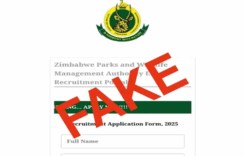The Zimbabwe Electoral Commission (ZEC) is required by law to conduct a delimitation exercise every 10 years to draw up boundaries for parliamentary constituencies and local council wards before holding general elections. The country’s main civil society election watchdog, ZESN, says the delimitation process needs to be strengthened “to provide clear procedures and stakeholder consultations” in line with international best practice.
The last mapping programme of wards and constituencies was done in 2008.
Which law mandates ZEC to undertake this exercise?
ZEC is empowered to carry out this exercise in terms of Sections 160 and 161 of the Zimbabwe Constitution and Section 37a of the Electoral Act.
If a general election is held less than six months after a delimitation, the old constituency and ward boundaries must be used for the election, according to Section 161(2)] of the Constitution.
What happens in the process of compiling the report?
At a technical level, according to the Electoral Act Section 37a, ZEC must publish a public notice in the Government Gazette, and elsewhere before starting a delimitation exercise.
Consultations – during the process of delimiting boundaries, ZEC must – that is obliged to entertain representations from political parties, voters and other interested parties.
The Zimbabwe Electoral Commission delimits wards and constituencies, ensuring that no ward is divided between two or more local authority.
Presidential and Parliamentary Roles – After completion of its Interim Delimitation Report, ZEC must submit a preliminary report to the President showing the new boundaries and the President must lay the report before Parliament (the National Assembly and the Senate) – within seven days.
For the 2023 elections, ZEC officially presented its Preliminary Delimitation Report to the President on December 26 2022, and Parliament was summoned back from recess to convene on January 6 2023 to consider the report.
Within 14 days after that, the President must refer the preliminary report back to ZEC for it to consider any issue arising from the presidential and parliamentary reviews [Section 161(7) & (8)].
ZEC must give consideration to any issue so raised, but ZEC has the final decision [Section 161(9)].
Once ZEC has prepared its Final Delimitation Report, it must send the report to the President, who must publish it in the Government Gazette within 14 days.
What are the timelines for delivering the Delimitation Report?
The Delimitation Report must be completed six months or more before polling day in the general election.
Can the process be legally omitted, and under what legislation?
If a general election is held less than six months after a delimitation, the old constituency and ward boundaries must be used for the election [section 161(2)]
What does Zimbabwe’s major election watchdog say about the process?
In its report on the last general poll in 2018, the country’s major election watchdog, the Zimbabwe Election Support Network (ZESN), said the Electoral Act needs to reviewed to include elaboration on stakeholder consultations.
Sources:
Zimbabwe Electoral Commission
Constitution of Zimbabwe Amendment (No. 20) Act, 2013.
Zimbabwe Election Support Network (ZESN) Report on the 30 July 2018 elections.
——-
This factsheet was compiled by Bridget Mabanda, an intern at ZimFact and the deputy news editor of a college fact checking club at Harare Polytechnic initiated by ZimFact.
For more information, follow us ZimFact on Facebook, Twitter and Instagram.
Related issues:
Can Parliament convene urgently over Zimbabwe delimitation report
2023 Elections Fact-checks
2023 Registered Political parties
Zimbabwe Poll Fees amongest highest in Africa
Role of international observers in Zimbabwe elections
Do you want to use our content? Click Here












